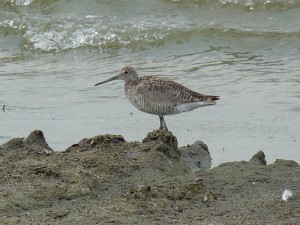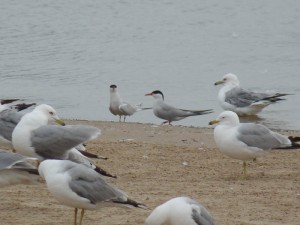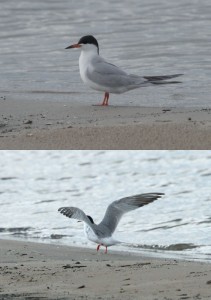Montrose Dunes has been excellent for swallows lately. On July 15 I photographed a juvenile Northern Rough-winged Swallow next to a juvenile Bank Swallow on the yellow rope that cordons off part of the south end of the Dunes. These 2 “brown” swallows can look alike from behind.
In the photo to the right, note the narrow whitish edges to the tertials and primaries and the lack of rufous in the wing coverts of the Bank Swallow (left bird). The juvenile Rough-winged has duller edges to the tertials, and rufous edges to the primaries and wing coverts. The Bank Swallow also has a paler rump than the Roughie and pale edges to the tail feathers. I wasn’t aware of this later feature until I noticed it yesterday, and I’m not sure it’s a completely solid field mark but I didn’t notice it on any of the Rough-winged Swallows I looked at.





